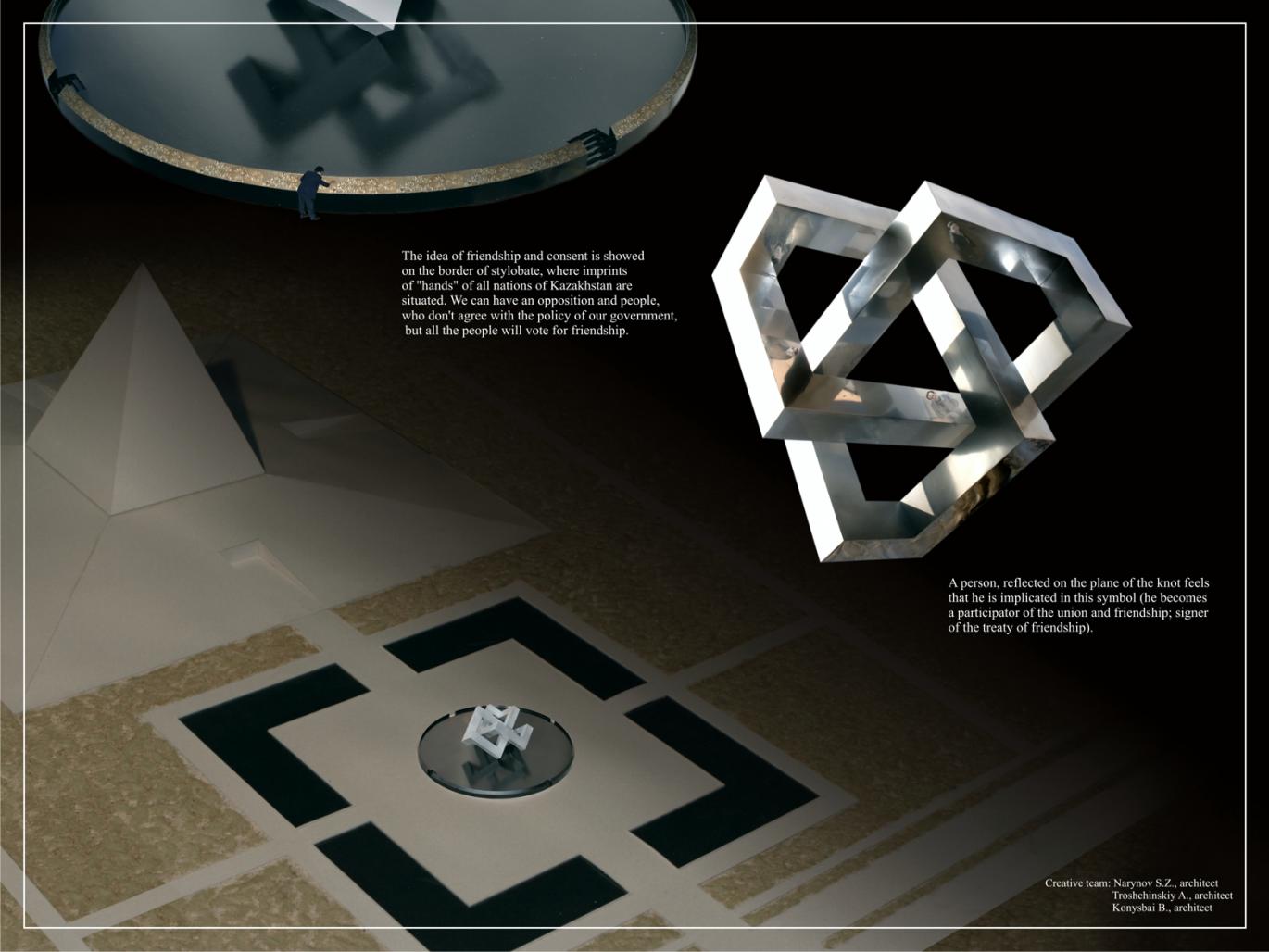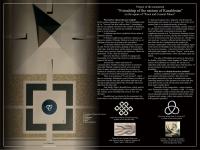Project of the monument “Friendship of the nations of Kazakhstan” on the square of “Peace and Consent Palace”
Why had we chosen the knot symbol?
In the common language we say: “Ties of friendship unite us” or “You and I are tied with one knot”. According to this we can suppose, that knot is the symbol of friendship, union, mystery. Let’s examine the symbolic meaning of knot in world religions.
1. In Induism rope knots symbolize divine union of brahmins {priests}.
2. In Islamic tradition knot performs a function of protective amulet. Orthodox Moslem to avoid evil eye or intrigues of foes ties up a knot on his own beard.
3. In Christian tradition knot symbolize sacred vow or oath. Newly-made monks, girdling on their cassocks with ropes, tied three knots on this ropes to remind them of three vows: poverty, chastity and obedience. Hence the expression “To tie a knot for memory”
Knot also has been a symbol of conjugal unit. Essentially two twisted rings mean love and devotion, union of the lovers.
Ancient inks widely used knots for communication. Nodular writing had lost it’s positions only after Spanish conquista. Knots were used in the fleets of many countries and there they served as an emblem of complexity, union and mystery of the sailors. The speed of vessels id still measured in knots.
There is an expression “To cut the knot”, which has two meanings: disturbance, end of union, revealing of the secret from the one side, and resolute and brave act, solving complicated problem {like Alexander The Great did} from the other side.
And finally Turkic {Kazakh} knot, widely used in arts and crafts of Kazakh people, was a symbol of long life, infinity, great friendship and consent, love and devotion.
Kazakh knot was chosen for the monument, but as this knot is very difficult for architectural composition, we had exarticulated only a fragment, which keeps all functionality and volume. Let us notice, that in the art of ancient Saks it was depicted exactly in this way.
Our knot symbolizes friendship, consent, union of the all nations of our country. It is architecturally distinct, strict and beautiful. Some kind of mystery and complexity presents in it. To the person, standing in front of the composition it seems, that the knot consists of two or even of three knots, but then he discovers, that there is only one knot. A person, reflected on the plane of the knot feels that he is implicated in this symbol {he becomes a participator of the union and friendship; signer of the treaty of friendship}. For Kazakh people this knot has one more meaning – it has three branches, but it is indivisible and integral, like three “zhuzes”, which make up indivisible Kazakh ethnos, where all people equal and united.
The idea of friendship and consent is showed on the border of stylobate, where imprints of “hands” of all nations of Kazakhstan are situated. We can have an opposition and people, who don’t agree with the policy of our government, but all the people will vote for friendship.
Why have we denied decorative method?
Realistic sculptural images is modern architecture rarely blend with space structure. They have to be thoroughly abstracted or done in architectural scopes. Attracting attention of the spectators for some time they soon don’t arouse it at all, the spectator don’t think of them, don’t examine them.
Materials of the composition – mirror stainless steel. Dimensions: height – 10 meters, width – 15 meters.
Stylobate is made of black zhitomir granite with mosaic {Kazakh national ornament} made of other sorts of granite {red, orange, yellow taraz granite, kurtinskiy and kegenskiy granites}.
Creative team: Narynov S.Z., architect
Troshchinskiy A., architect
Konysbai B., architect
2006




